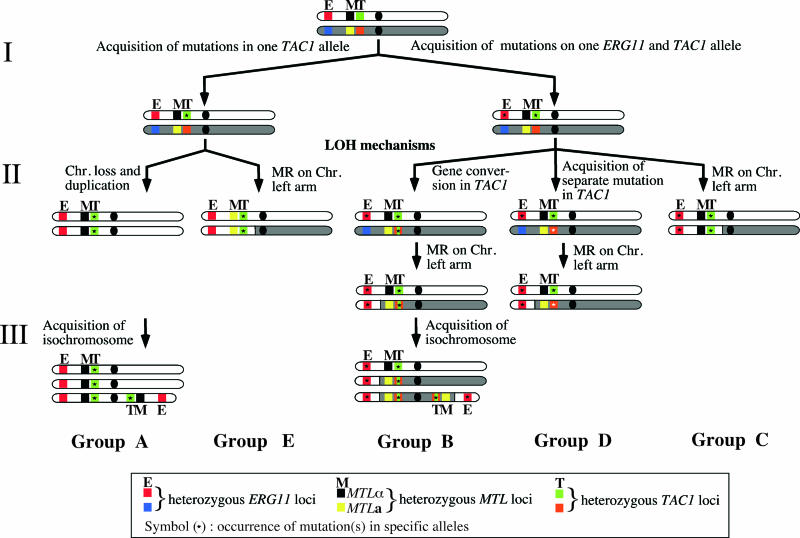FIG. 8.
Schematic representation of Chr 5 and azole resistance gene modifications in the groups of investigated strains. After acquisition of GOF mutations on one TAC1 allele and also possible acquisition of mutations in ERG11 (step I), different LOH events occurred at these loci, including loss of Chr 5 and duplication, mitotic recombination of the left arm of Chr 5, and gene conversion in TAC1 (step II). The formation of i(5L) is an additional event (step III) leading to the increase of the copy numbers of azole resistance genes and possibly yet unidentified resistance genes on the 5L arm. For simplification, the acquisition of the TAC1 mutation (step I) is shown linked with MTLα in group E, although it is linked to MTLa. It is possible that steps I to III can be sequentially arranged in a different manner. MR, mitotic recombination. In group A, sequence analysis allow the deduction that TAC1-18 originated from TAC1-17 by acquisition of only one nonsynonymous substitution (ΔM677). In group B, TAC1-11 arose from TAC1-9 by acquisition of the A736V substitution. TAC1-10 is the result of gene conversions between TAC1-8 and TAC1-11. In group C, it is not possible to determine whether or not TAC1-15 arose from TAC1-12 or TAC1-13. In group D, TAC1-21 and TAC1-22 originated from TAC1-19 and TAC1-20, respectively, by acquisition of two distinct GOF mutations, A736V and ΔL962-ΔN969. Finally, in group E, TAC1-25 originated from TAC1-23 by acquisition of the A225T substitution.

